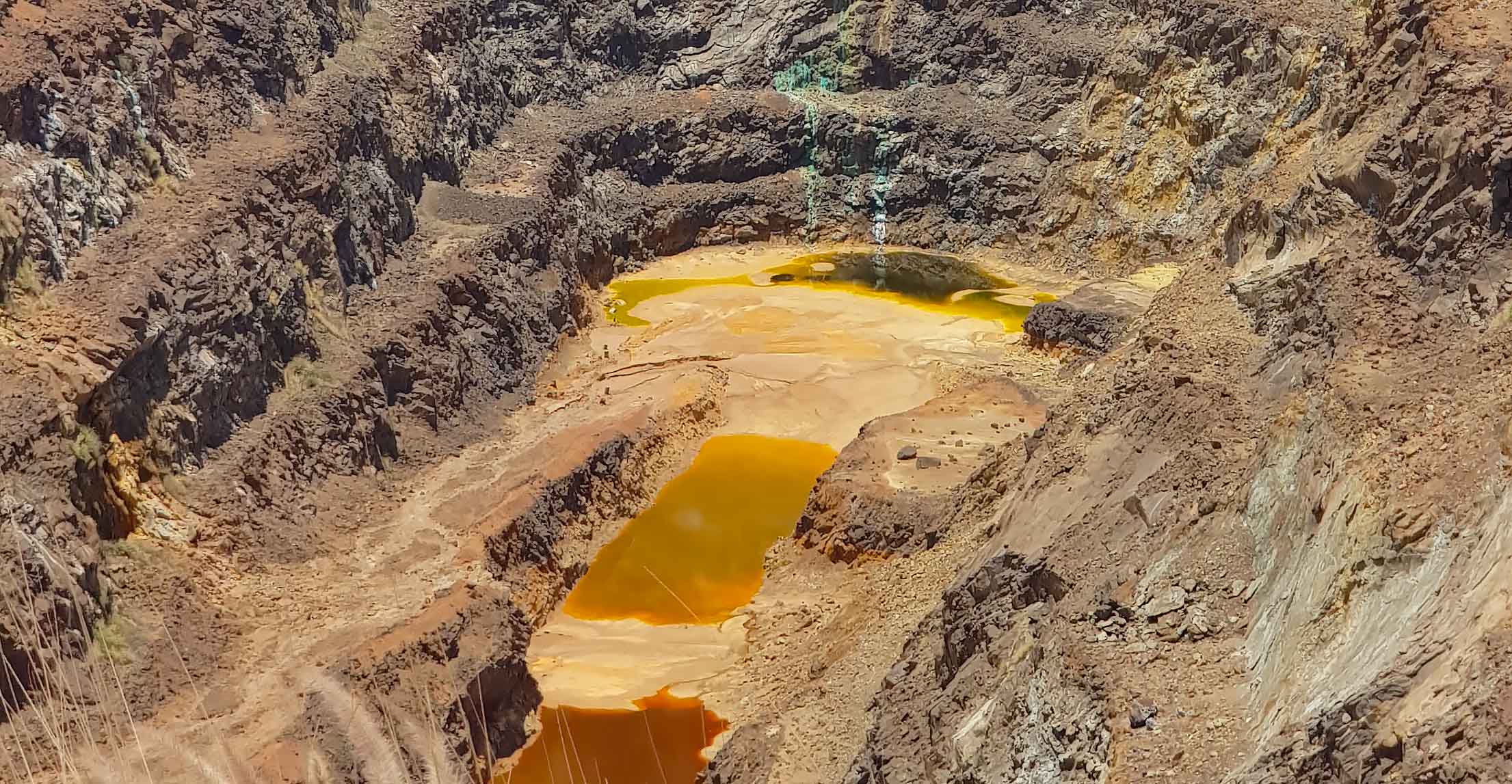CHAPTER 5: SULPHIDE MINERALS AND ACID ROCK DRAINAGE
Acid rock drainage from sulfide minerals is the most significant environmental impact from mines. In this chapter we discuss weathering, acid rock drainage and methods for prevention and mitigation.
The most significant environmental impact from mines results from minerals that weather and release potentially harmful elements into water resources. Sulfide minerals are easily weathered due to their chemical properties and they also often carry metals that can be harmful to the environment, such as zinc, lead, cadmium etc.
Sulfide minerals
Sulfide minerals are compounds of sulphur with one or several metals. Many ores contain sulfides, such as chalcopyrite, sphalerite, galena, cinnabar, stibnite etc. Sulfides are formed in reducing environments with low or no content of oxygen. Therefore, they can become unstable and oxidize when exposed to atmospheric oxygen. When sulfide minerals oxidize, metal ions will be released into solution. Additionally, some sulfide minerals will release hydrogen ions (H+) (acid generating) during the process which lowers the pH in the water. Acid and metal-rich water originating from the oxidation of sulfide minerals is called acid rock drainage (ARD).
ARD is a naturally occurring process in rocks containing sulfide minerals exposed to oxygen and water. The process is often slow in nature, because that acid-producing sulfide minerals are rare in the earth crust. However, mining of sulfidic ores is conducted in areas whereas these minerals are highly concentrated compared to that in average rock. An acid drainage generated from the oxidation of sulfide minerals associated with mining processes, is called acid mine drainage (AMD). The process of ARD and AMD is however, the same.

Sulphide minerals in waste rock from a gold mine.
Detecting acid mine drainage
Significant traces of AMD can sometimes be spotted in open pits or at waste rock piles, showing a colored drainage of water, for example at open pit lakes. The color comes from the precipitation of metal oxides/sulfates. An abundance of iron oxides will give the water a red color, which is most common. The water can also have other colors, for example green for copper. In general, AMD can be hard to spot with the naked eye, requiring monitoring of recipients (surface water and groundwater) for analyzing pH and metal content.
Even if ARD has been in progress since the start of a mining project, it can in some cases take years to detect. The ARD-process can start slowly, but as the pH is lowered and feedback mechanisms start it can rapidly increase and quickly get out of hand. At this stage, the generation of AMD at a mine site can become difficult and expensive to mitigate.

Acid mine drainage at an open pit. Acidic, metal-rich water can be seen at both the bottom lake of the pit and the pit walls. Photo: Pontus Westrin.
Prediction
An important part of the Environmental Impact Assessment (EIA) is to predict ARD. A prediction of ARD will preferentially start during the exploration phase and continue during the whole life of mine. Prediction of drainage quality is to be made both qualitatively and quantitatively. A qualitative prediction will evaluate if acidic conditions might develop in the mine waste. If so, this will lead to a release of metals and acidity to the mine drainage. A quantitative prediction will evaluate the extent of acidity and metals released during a certain time frame. This can be done by several different methods, but generally includes a waste characterization whereas samples are tested in a lab in different ways to see if they will produce acid. Mine waste characterization is conducted to predict future quality of the leachate. Performing a geochemical characterization of mine waste generally means following a certain test programme to predict ARD generation and mine drainage chemistry. There are mainly two types of tests applied for this purpose. Static tests (often concerned as screening tests) evaluate if a sample will produce an acidic environment. If so, other tests such as kinetic tests will follow. Kinetic tests, evaluates, when the acidification will take place and which elements that are to be liberated from the sample. There are several types of tests used to get this information, and some are seen as standard methods. Overall, characterization would require an understanding of physical, chemical characteristics as well as the potential for acid generation, acid neutralization and leaching of harmful loads of metals.
Waste characterization must be preceded by representative sampling of the material that is to be analyzed and evaluated. Representative sampling is crucial for characterization results, although there are few guidelines available about this matter, especially concerning waste rock. Representative sampling is further explained in chapter 10.



